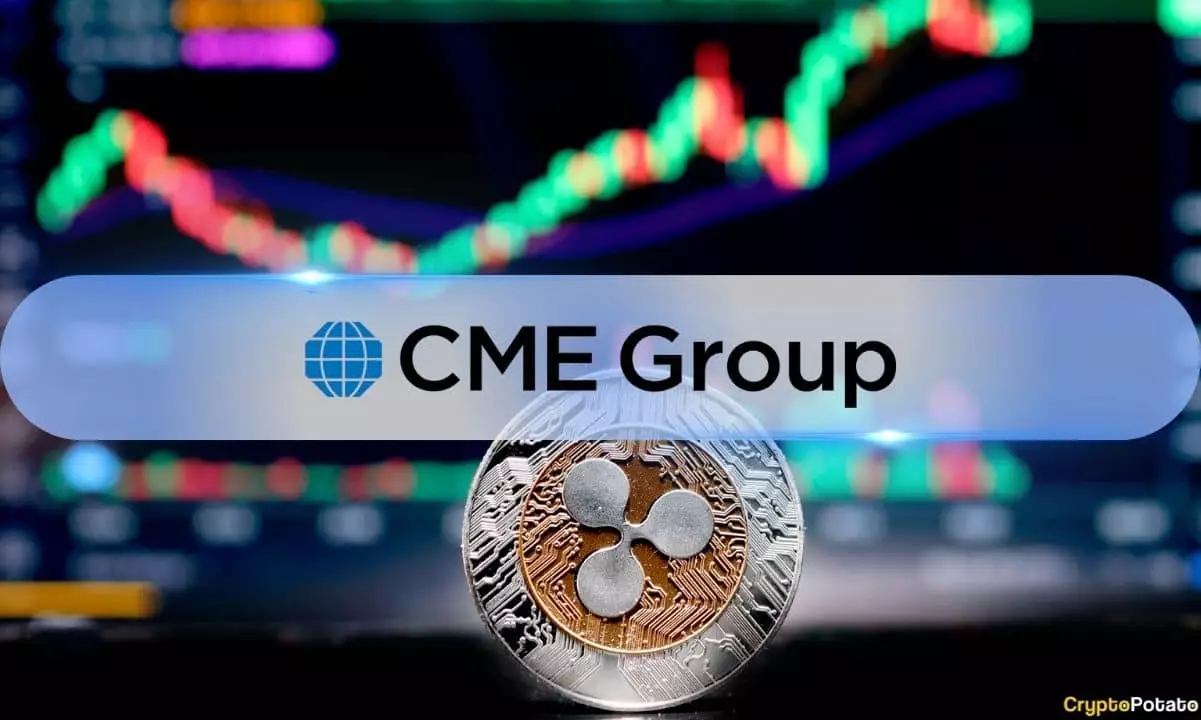On May 19, the Chicago Mercantile Exchange (CME) initiated XRP futures contracts, a landmark move in the integration of cryptocurrencies into mainstream financial systems. This development, positioned as a triumph for Ripple’s native currency, suggests a burgeoning institutional interest in digital assets. However, while this may seem like a progressive step forward, it carries several implications that warrant critical examination. With the growth of institutional-grade derivatives, we must question whether this shift will result in genuine market maturity or merely intensify volatility.
The introduction of these futures follows hot on the heels of similar products for Bitcoin, Ethereum, and Solana, indicating that major financial institutions are progressively embracing cryptocurrencies. Nevertheless, the key question arises: is this a genuine acknowledgement of the potential of cryptocurrencies as valuable assets, or merely a tactical response to an asset class that refuses to go away? This skepticism surfaces particularly when considering how historical patterns of financial markets often contribute to speculative bubbles and subsequent crashes.
Contract Specifications Reveal Complexities
CME’s XRP futures are crafted to cater to both seasoned traders and those looking for smaller exposure. The standard contract, which represents 50,000 tokens, may appear appealing at first glance; however, the underlying intricacies cannot be overlooked. With a minimum price fluctuation of $0.0005, the entry cost can accumulate quickly, placing financial strain on traders who underestimate the current market conditions.
The Micro XRP futures, while offering a more accessible entry point, come with complexities of their own. The fragmented sizes imply that sophisticated strategies may be needed to navigate the futures landscape effectively. Many novice traders could be lured by this derivative play without grasping the inherent risks tied to futures, leading them towards potential financial loss. Particularly in a market as unpredictable as cryptocurrency, excessive leverage can expose even the most cautious investors to unwarranted risks.
Judicial Roadblocks and Market Responses
Compounding the complexities around XRP futures is the legal backdrop of Ripple’s ongoing tussles with the U.S. Securities and Exchange Commission (SEC). Just days before the launch, Judge Analisa Torres denied a pivotal motion for a $50 million settlement between Ripple and the SEC. This ruling serves to highlight the murky waters within which Ripple operates, adding layers of uncertainty for current and prospective investors.
Despite the bullish prospects of institutional adoption, XRP’s market performance reveals a lack of vigor, dipping slightly recently. Such muted movement raises concerns about market confidence in assets under legal scrutiny. The excessive focus on derivatives may distract from the foundational issues that continue to affect the underlying asset, leading traders to engage in short-term speculation rather than fostering sustained growth.
Fee Structures Favor the Well-Connected
One vital aspect of the CME’s offering that merits attention is the steep fee structures associated with trading these contracts. While lower fees are available for individual members, non-members find themselves navigating significantly higher costs. This establishes a scenario where only those with considerable fiscal capability can afford to speculate robustly in the XRP futures market.
This poses serious questions: Does such a structure further entrench the wealth and privilege already present within the financial sector? The increasing exclusivity inherent in trading practices may deter smaller investors, who already experience an uphill battle in the crypto space. Moreover, it perpetuates an environment where only select players benefit from market movements, potentially distorting the intended democratizing effect of cryptocurrencies.
Market Sentiment Amidst Expansion
Despite the clear intention behind the CME’s XRP futures offering to accommodate a broader trading landscape, the market’s response tells a different tale. The recent price dynamics reveal a tepid investor feeling towards XRP, perhaps resulting from the overwhelming noise surrounding its legal entanglements and futures offerings. Although XRP did manage to gain about 12.1% over the past month in anticipation of the futures rollout, lingering doubts have seemingly overshadowed these gains.
Investors are realizing that while futures contracts can provide a gateway into sophisticated trading strategies, they do not alter the fundamental challenges XRP faces. A reliance on speculative plays rather than consistent, structural improvement weakens investor confidence and perpetuates the cycle of volatility common in the crypto space.
As we observe this critical juncture for XRP and the wider cryptocurrency market, it becomes increasingly essential to question who truly benefits from this shift towards institutionalization. The fervent rush towards creating derivatives may not be the panacea that the crypto world was hoping for. Instead, it might be a clarion call for deeper introspection on the socio-economic structures that govern trading behavior and price performance in the turbulent cryptocurrency market.


Leave a Reply